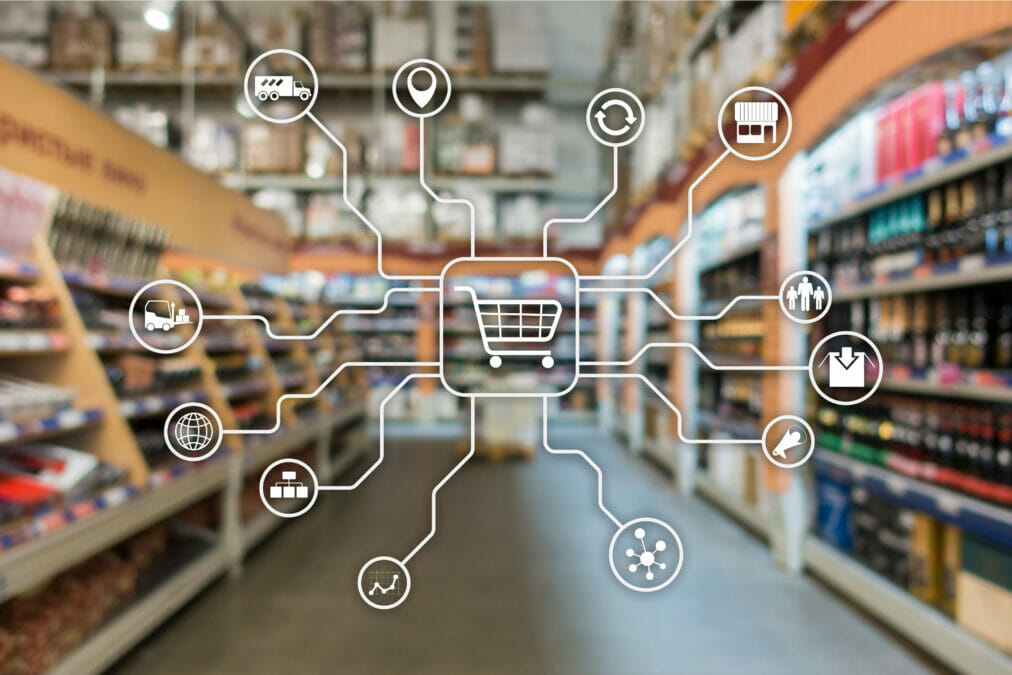As shops reopened across the UK, retail outlets hoped to see the bustle they once knew quickly return. In April, immediately following the easing of restrictions, visitors to high streets, retail parks and shopping malls rose by 90%. But despite this initial optimistic spike, footfall has since stubbornly remained a quarter below the pre-pandemic norm.
Confidence in safe shopping has had an impact. However, the decrease can also be attributed to a shift in consumer behaviour. The pandemic moved most shopping online and changed consumer preferences in the process. Shoppers became used to seamless and personalised shopping experiences. Online outlets remembered who they were and what they liked – and put that information to use recommending products and services.
Now in-store shopping is an option again, consumers don’t see why those standards shouldn’t continue in-branch. So the retail sector is faced with a challenge: it must replicate online customer experiences offline, as if they were a single channel – an ‘omnichannel’. This might sound difficult, but the ingredients are all already there.
Let the technology do the talking
The first barrier to achieving this omnichannel offering is practical: online retailers can offer personalised services because users log on, so they know who each customer is based on the information they hold about them. Surely, the same isn’t true in a brick-and-mortar setting, where customers don’t ‘log on’ but instead just walk in?
Well, technology may have the answer. Biometrics – the use of physical features such as faces, eyes or fingerprints to confirm identities – are becoming increasingly ubiquitous. Logging onto a phone using a fingerprint scanner no longer feels like sci-fi. This technology could easily be applied to the in-store customer journey.
Imagine it: you walk into a shop and log into your online account using facial recognition on your phone. As you look at products, further information appears on your phone. This creates an opportunity for retailers to offer personalised deals and details, with maximum relevance for every individual based on their activity and interest. Once you’re ready to make a purchase, there’s no need to go near a till as your payment system and loyalty points are integrated with your phone. The result is a seamless shopping experience – meeting the standards set by online retail – maximising both ease and COVID safety.
Alongside biometrics, IoT is another body of technology which can help realise this vision. For example, retailers could use connected devices to create an automated checkout system. They could arrange sensors to monitor customers’ movements around the shop floor, adapting the walls or signage to their preferences. Then, as a shopper looks up different items, data will be generated which allows the store to provide tailored product suggestions based on their live activity and shopping history, both online and in-store.
For the retailer, these technologies enable them to gather better and more integrated data, offering insights into customer choices. For the customer, they provide a more personalised in-store experience. So given these technologies are readily available, why aren’t brick and mortar retailers already adopting them to regain their pre-pandemic custom?
What you need to know about consumer privacy and facial recognition
Joining the data dots
Connecting offline with online isn’t as easy as flicking a switch. If retailers want to use technology to offer streamlined in-store experiences, they must ensure that their underlying IT infrastructure allows data to be shared across the business. From the customer’s perspective, they must feel as though preferences they express at any time are remembered, however they interact with the business.
The reality today is that many businesses, not just retailers, don’t have this type of interconnectivity. Instead, as a business grows organically and through acquisitions, new systems are bolted on and the data contained within different units remains fragmented and unconnected. For customers, this often results in a frustrating customer experience.
This phenomenon is often referred to as ‘identity silos’. In a retail context, this often manifests as loyalty cards, mobile and online services working on separate systems, with different login details and a lack of information sharing or personalisation carried between them. An added danger is that identity silos often create additional security and privacy risk. Without a clear and unified view of customer data, retailers will struggle to comply with customers’ opt out requests, meaning they risk breaching privacy laws like CCPA and GDPR.
Identity silos are a problem at the best of times, but for retailers hoping to win back the loyalties of their customers and regain their pre-pandemic levels of footfall through an omnichannel offering, they are a serious barrier. So how can retailers do away with them?
The curious case of Brexit and the disappearing GDPR
The secret ingredient is identity
The first step should be to establish where the various silos of customer data sit. This can be achieved through a fairly straightforward audit, mapping out existing system disconnects onto the customer journey. The next step is to use a modern identity management platform to bring those disparate parts under a single roof. The chosen platform should seamlessly integrate with legacy identity systems, applications – and any new solutions the IT department wishes to deploy further down the line.
These steps sound simple but they stem from a powerful principle: approaching your data systems design from an identity-centric point of view. If you want your customers to feel that the service they receive is built around them and their preferences, it shouldn’t be a surprise that your infrastructure should be built around that information too.
The end goal is uniting all customer identity information under a single modern, adaptable, and centralised system. This will mean that if a customer expresses a preference through one channel that information will be shared and acted upon if they interact with the brand through another channel entirely. And if you can do that, you are most of the way towards being able to offer your customers the kind of integrated, omnichannel offering they are looking for after a year of online shopping.
Conclusion
With the future of the high street hanging in the balance, retailers must not lose sight of what matters most – providing a quality customer experience and forging ever closer customer relationships across any channel. With consumers increasingly basing their expectations on online offerings, the success of retail outlets in regaining customer loyalty will ultimately rest on their ability to use the latest IoT and biometrics, sitting on top of a unified approach to customer identity information, to create seamless, personalised and omnichannel offerings.











